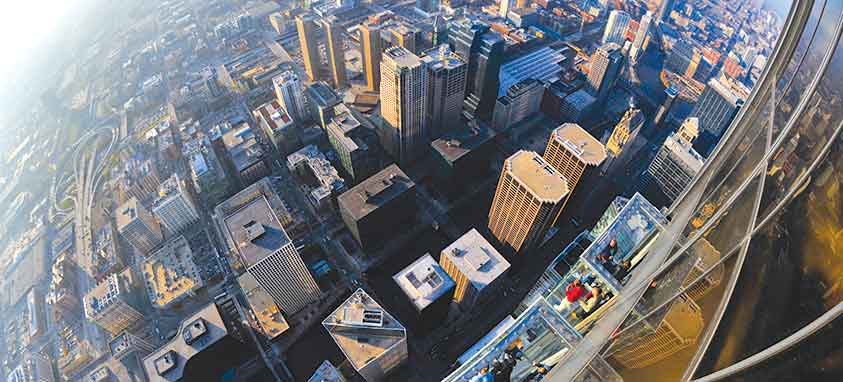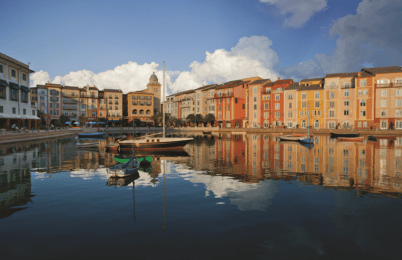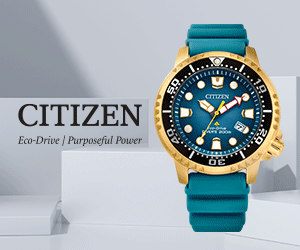Willis Tower
For meetings and hospitality, Chicago sets the standard
City of the Big Shoulders is just one of Chicago’s nicknames. There’s also the Windy City, Second City, Chi-Town, That Toddlin’ Town and some three dozen others. Poets, entertainers and purveyors of popular culture have bestowed nicknames on this city, evoking a variety of images.
As you descend over Lake Michigan toward the gleaming, sky scraping metropolis below, however, one thing is clear: This is a city on the move, with its own strong identity and a place among the great cities of America and the world.
Today, this city of 2.7 million people is the center of a metropolitan area of 9.5 million—nearly 75 percent of Illinois’ state population. It’s no longer the Second City in America, of course; the population of Los Angeles passed it some years ago. But Chicago remains a driving force in American commerce, industry, arts, architecture and culture.
It is also an economic driver in the energy field, but not the kind for which you drill. Chicago has always had a vibrant, creative energy and continues to evolve before our eyes. This energy is expressed everywhere you go in this hustling, bustling city that gave the world its first steel-frame skyscraper, the 10-story, 138-foot-tall Home Insurance Building, in 1885.
Because of this energy and the momentum of a local-government-driven upgrading campaign in the hospitality and meetings industries, this lakefront metropolis offers a whole new buffet of options to meeting planners and attendees, with even more on the way.
A City on the Move
 The Collection at McCormick Square rendering
The Collection at McCormick Square rendering
When it comes to the hospitality and meetings industries, Chicago isn’t exactly starting from scratch. In 2015, the city welcomed more than 52 million visitors, who generated $2.2 billion in hotel expenditures, $935 million in tax revenues and $124.1 million in hotel tax revenues. Mayor Rahm Emanuel, former White House chief of staff for President Barack Obama, has set a goal of 55 million visitors annually by 2020.
City officials haven’t wasted any time in getting the plans off the ground. In July, Mayor Emanuel and Choose Chicago named David Whitaker the new president and CEO of the destination marketing organization. Whitaker is a respected industry veteran who formerly worked with Tourism Toronto and Brand USA. He’s hit the ground running; after only a few months, he has already introduced a comprehensive list of initiatives to achieve the mayor’s ambitious goal.
It hasn’t taken long to see results, either. In October, Mayor Emanuel and Whitaker announced record tourism figures for the first three quarters of 2016, for both leisure and group segments. Overall demand for the first three quarters was up by 2.2 percent; September alone saw demand grow by 6 percent.
 19th Floor Atrium at Conrad Chicago
19th Floor Atrium at Conrad Chicago
Chicago’s heart-of-America location and two nearby airports make the city only a few hours from anywhere, and it helps companies and associations set attendance records for their meetings. In addition, planners who arrive for site inspections at either airport now have more hotel choices than ever. Chicago is in the midst of adding 12 new hotel properties, to be completed by next year. In the Central Business District, there will be 2,982 additional guest rooms. One of the goals of this expansion is to give planners more flexibility, and to expand the city’s offerings for small and midsize meetings.
In June, Chicago occupancy rates were close to 90 percent, and conventions were a major contributor to that figure: NeoCon brought 53,000 attendees; the American Society of Clinical Oncology had 38,500; and the American Water Works Association brought 11,500.
 McCormick Place Event Center at McCormick Square rendering
McCormick Place Event Center at McCormick Square rendering
The big news in Chicago these days is The Collection at McCormick Square, an emerging complex. Taking shape in the heart of the city, the development will be one of America’s great meeting, lodging and event centers, all under one roof.
The Collection is anchored by McCormick Place convention center, America’s largest, with 2.6 million sq. ft., which is surrounded by the lively McCormick Place Entertainment District. Opening next year will be the $173 million, 10,000-seat McCormick Place Event Center, along with Marriott Marquis Chicago, a $390 million, 40-story, futuristic glass eye-catcher on the lakefront, with 1,205 guest rooms and 90,000 sq. ft. of meeting space. The Marriott will join the landmark Hyatt Regency Chicago, with 2,019 guest rooms and 240,000 sq. ft., providing a second headquarters hotel for the convention center.
 Hyatt Regency Chicago
Hyatt Regency Chicago
The Marriott, however, is just one of many new hotels popping up there. Conrad Chicago debuted its luxurious ambience in November with 287 guest rooms and 10,000 sq. ft. of meeting space with 360-degree views illuminated by natural light and outfitted with the latest technology. The Gwen Hotel Chicago, a member of the prestigious Luxury Collection, opened last year with 333 guest rooms and suites, and 3,388 sq. ft. of event space.
 The Peninsula Chicago (photo by The Peninsula Hotels)
The Peninsula Chicago (photo by The Peninsula Hotels)
The city’s existing hotels have won many laurels, but they’re hardly standing still on them. The Peninsula Chicago, with 339 guest rooms and 33,333 sq. ft. of meeting space, completed a $37 million renovation to its guest rooms and technology infrastructure in May. The Ritz-Carlton, Chicago is now undergoing a renovation of its 429 guest rooms, fitness center and public spaces, along with adding a new Club Lounge. Phase two, with improvements to the lobby, main restaurant, spa and 25,000 sq. ft. of meeting space, will begin in January and be finished by June.

Waldorf Astoria Chicago recently began the first phase of a $17 million renovation, updating 6,742 sq. ft. of meeting space and the courtyard, along with a guest room conversion that will add 26 rooms for a total of 215—all completed by the end of the year. The second phase, which will include a new restaurant concept, is about to commence.
 The Ritz-Carlton, Chicago
The Ritz-Carlton, Chicago
Trump International Hotel & Tower Chicago is a downtown mainstay on North Wabash Avenue. The luxury high-rise hotel offers a bold design along prime riverfront real estate. Distinguished in Travel & Leisure’s 2016 World’s Best Awards, the Forbes Five Star property boasts 339 guest rooms and 26,000 sq. ft. of meeting space. Sixteen restaurant also holds Forbes Five Star status in addition to two Michelin Stars. Groups can enjoy a private fine-dining experience with 30-foot floor-to-ceiling views of Lake Michigan.
Innovation Lives Here
 Chicago Blues Festival (photo by Adam Alexander)
Chicago Blues Festival (photo by Adam Alexander)
“It is hopeless for the occasional visitor to try to keep up with Chicago,” Mark Twain said in 1883. “She outgrows his prophecies faster than he can make them.”
By that time, Chicago, incorporated in 1837, was already one of the biggest cities in America. Tragedy struck with the Great Chicago Fire in 1871, when Mrs. O’Leary’s cow gained immortality by allegedly kicking over a lantern into the hay. In doing so, that cow was believed to have started America’s most famous fire, which consumed the city built of wood. However, in true Chicago fashion, by the time Twain made his statement, the city, like the phoenix, had risen again. It had been totally rebuilt—and this time not out of wood.
The spirit of innovation in this city has contributed mightily to the American economic engine, as well as to popular culture. In addition to building America’s first skyscraper, Chicago is where historic Route 66 begins, at Grant Park in front of the Art Institute of Chicago. Local inventions that helped modernize American life include the refrigerated rail car from Swift, mail-order retailing by Sears and Montgomery Ward, the Motorola car radio and the Zenith TV remote control. Willis Tower, at 1,451 feet, is the second-tallest building in North America.
 Chicago deep-dish pizza
Chicago deep-dish pizza
This is the city that gave us the renowned Second City comedy troupe, many of whose players went on to star on Saturday Night Live. Chicago is also known for its Chicago-style, deep-dish pizza, along with its many contributions to the distinctly American musical genre of jazz. Incidentally, jazz is not just a historical footnote here; there are still many great places to hear the music around town.
Danielle Cote is vice president of event marketing at Sage, an international software-solutions company for small and midsize businesses, with American headquarters in Atlanta. She brought some 16,000 attendees from around the world to Chicago in July for Sage Summit, billed as the world’s largest gathering for small and midsize businesses.
“We met at McCormick Place and stayed at 10 hotels,” Cote says. “Our attendees had nothing but praise for Chicago. Summertime is great there. And so is the convention and visitors bureau. Our attendees loved being near the lake for strolling, jogging and sightseeing…and we also had a great outdoor concert on the lakefront. Our people felt the excitement of a dynamic city that seems to be reinventing itself constantly. There’s so much to see and do—great restaurants, cultural amenities, sports, shopping—we’re definitely going back again.”
Culture & Colorful Neighborhoods
 Museum of Science & Industry (photo by TJ.B. Spector/Museum of Science and Industry, Chicago)
Museum of Science & Industry (photo by TJ.B. Spector/Museum of Science and Industry, Chicago)
Chicago is a city of beloved, iconic spots, among them the lakefront; Millennium Park, filled with interactive artworks by renowned artists; and the Chicago River, running through downtown and now the site of the emerging Riverwalk. Then, there’s the Magnificent Mile along Michigan Avenue, lined with some of the most beautiful shops in America.
Perhaps one of the best things about these iconic places is that you can hold your meetings in many of them. At Museum of Science & Industry, the largest science museum in the Western Hemisphere, planners can take advantage of 400,000 sq. ft. in places such as exhibit halls, futuristic houses, theaters and even a World War II submarine.
 Michigan Avenue Entrance at Art Institute Chicago (photo by Art Institute Chicago)
Michigan Avenue Entrance at Art Institute Chicago (photo by Art Institute Chicago)
Art Institute of Chicago ranks among America’s greatest cultural institutions, and this facility can accommodate more than 4,000 attendees in areas such as the Chicago Stock Exchange Trading Room, Pritzker Galleries of Impressionism and Rubloff Auditorium. In addition, Millennium Park’s Harris Theater can hold 1,525 for events.
“The cultural facilities and vibrant cultural life are one of the reasons we selected Chicago,” says Kristin Shassetz, director of meetings at the Denver-based National Conference of State Legislatures. Shassetz brought more than 5,000 delegates from all over the world to Chicago for the NCSL Legislative Summit, held Aug. 8–11.
 Harris Theater
Harris Theater
“We had a reception at the Field Museum, and we were able to see the ancient Chinese terracotta warriors there,” Shassetz says. “This was our fourth time in Chicago, and there are reasons we keep going back. We love the easy airlift. We love the incredible variety of restaurants. We love the exciting downtown. We love the fact that there are special events—festivals, fairs, sports events—going on all the time. And it’s a great walking city, sitting right on one of the Great Lakes.”
Shassetz is right about Chicago being a walking city. As you walk along Lakeshore Drive, you have one of the world’s most impressive collections of skyscrapers on one side and the infinite blue of Lake Michigan on the other, fading into a misty horizon beyond which lie northern Indiana and southern Michigan.
 The Gwen, a Luxury Collection Hotel
The Gwen, a Luxury Collection Hotel
Walking the city streets also will quickly reveal that this is, at heart, a city of neighborhoods and of colorful enclaves still retaining much of the tradition and cuisine of the immigrants who first settled there. Chicago also features interesting little shops and hole-in-the-wall restaurants where the exterior is nondescript but the food is outstanding.
Stroll through the Bucktown/Wicker Park area, where goats once grazed in what is now considered one of the trendiest neighborhoods in America. Gold Coast/Old Town is anchored by Oak Street, often called “Rodeo Drive of the Midwest,” with bustling nightlife. Hyde Park is home of the University of Chicago and President Barack Obama. Then there’s the River North district, once a derelict area, but now boasting the largest concentration of art galleries in America—more than a hundred of them.
“Chicago is a global destination for business, culture, cuisine and recreation,” Mayor Emanuel says. “One reason we are consistently among the top cities in the world for meetings and conventions is because we’re centrally located, with the most connected airports in the country. But the real reasons so many people choose Chicago, time and again, for their meetings and conventions range from the restaurants to the architecture, to the museums, to the lakefront and riverfront, to the history and people. Chicago truly has something for everyone.”
Meet in Rosemont

Just outside Chicago is an attractive urban village called Rosemont, which planners are beginning to notice. Rosemont’s population is only around 4,000. But it has an importance far beyond its numbers.
For one thing, you can practically walk to Chicago O’Hare International Airport (ORD) from town, and it’s only 20 minutes from downtown Chicago. For another, there are plenty of entertainment options, most likely the main reason why Rosemont hosts around 75,000 visitors a day. The town hasn’t forgotten meeting planners either; there’s a convention center, several theaters, other venues and a number of good hotels.
Donald E. Stephens Convention Center plays in the big leagues with 92,000 sq. ft. of meeting space, 50 meeting rooms, a sky bridge connected to nearby hotels and free Wi-Fi. Also notable for meetings is Crowne Plaza Chicago O’Hare Hotel & Conference Center, well-appointed with a pool, fitness center, business center, four restaurants, 503 guest rooms and 55,000 sq. ft. of conference space, and it’s only a stone’s throw from the airport.
With 17 hotels, Rosemont may have more accommodations than any other village its size in the country. In addition to the Crowne Plaza, these include Hilton Chicago O’Hare Airport, with 860 guest rooms and 45,000 sq. ft. of meeting space, and the Hyatt Regency O’Hare (pictured), with 1,096 guest rooms and 110,000 sq. ft. of meeting space. Rosemont Theatre also holds corporate meetings and events with seating for up to 4,300.
Rosemont also has an active spectator-sports scene. There’s minor-league hockey and the renowned DePaul University basketball team at the 18,500-seat Allstate Arena. By 2018, Rosemont will also have new minor-league teams playing in a new $55 million stadium.
Steve Winston is an award-winning writer who has traveled extensively and writes for national and international magazines.
Major Meeting Venues
Chicago
Chicago Marriott Downtown Magnificent Mile
In the heart of the Magnificent Mile; 9,000-square-foot fitness center with great views; Harvest restaurant serves farm-to-table Midwestern classics; business center; 1,200 guest rooms; 68,000 sq. ft. of meeting space.
Crowne Plaza Chicago Metro Downtown
West Loop location near restaurants, Greektown, financial district; 24-hour fitness center; 1940s-style Dine restaurant; business center; meetings director; 398 guest rooms; 8,000 sq. ft. of meeting space.
Fairmont Chicago, Millennium Park

AAA Four Diamond hotel close to attractions; 24-hour fitness studio; full-service mySpa; three restaurants and bars; recently completed $60 million renovation of meeting spaces; 687 guest rooms; 16,000 sq. ft. of meeting space.
Hilton Chicago
Member of Historic Hotels of America; overlooking Lake Michigan; business center; fitness room with indoor track; signature restaurant is 720 South Bar & Grill; Irish pub; 1,544 guest rooms; 234,000 sq. ft. of meeting space.
Hyatt Regency Chicago
AAA Four Diamond downtown hotel; close to Lake Michigan and Magnificent Mile; free Wi-Fi; 24-hour fitness center; Stetsons Modern Steak & Sushi and four other restaurants; 2,019 guest rooms; 240,000 sq. ft. of meeting space.
Hyatt Regency McCormick Place

Connected to McCormick Place; five restaurants and lounges; indoor heated pool; 24-hour fitness center; lakeside jogging paths nearby; 1,258 guest rooms; 50,100 sq. ft. of meeting space.
Hyatt Rosemont
Close to airport and Donald E. Stephens Convention Center; business center; Networks Restaurant has outdoor patio; fitness center; complimentary Wi-Fi; free airport shuttle; 206 guest rooms; 9,680 sq. ft. of meeting space.
InterContinental Chicago Magnificent Mile
Originally built in 1939, with unique design elements; indoor pool; three restaurants and lounges; 24-hour business center; gift shop; fitness center; spa; 792 guest rooms; 45,000 sq. ft. of meeting space.
JW Marriott Chicago
Historic and luxurious Chicago landmark in the Loop; world-class dining in The Florentine; full-service spa; fitness center; indoor pool; 24-hour business center; 610 guest rooms; 44,000 sq. ft. of meeting space.
McCormick Place
Largest convention center in America; complex of four technologically advanced buildings; assembly seating for 18,000; four theaters, one with 4,249 seats; 2.6 million sq. ft. of meeting space.
Palmer House, A Hilton Hotel
AAA Four Diamond hotel in historic building; Balance Spa & Health Club; Lockwood Restaurant and Bar serves upscale American; seven ballrooms; 77 meeting rooms; 1,641 guest rooms; 130,000 sq. ft. of meeting space.
Renaissance Chicago Downtown Hotel
Surrounded by the Loop, State Street and the Theater District; Rejuvenation Center has indoor pool and spa services; urban rooftop bar; 560 guest rooms; 34,127 sq. ft. of meeting space.
The Congress Plaza Hotel & Convention Center
A Chicago landmark since 1893; adjacent to Grant Park and Lake Michigan; 24-hour fitness center; complimentary Wi-Fi; business center; two restaurants and lounge; 839 guest rooms; 50,000 sq. ft. of meeting space.
The Drake
Historic, elegant hotel on Lake Michigan; fitness center with Precor equipment; business center; Drake Arcade shops; four restaurants include signature Coq d’Or; 535 guest rooms; 33,657 sq. ft. of meeting space.
The Westin Michigan Avenue Chicago
In the middle of Magnificent Mile shopping and restaurants; fitness center; Body Rituals Boutique Spa; upscale dining at The Grill On the Alley; Fedex; 752 guest rooms; 37,000 sq. ft. of meeting space.
Trump International Hotel & Tower Chicago
Forbes Five Star ratings for hotel and Sixteen restaurant; full-service options at The Spa At Trump; indoor pool; well-equipped health club; 339 guest rooms; 26,000 sq. ft. of meeting space.
Rosemont
Crowne Plaza Chicago O’Hare Hotel & Conference Center

Close proximity to airport; free Wi-Fi; fitness center; indoor pool; well-equipped business center; four restaurants and bars; catering and audiovisual services; 503 guest rooms; 55,000 sq. ft. of meeting space.
Donald E. Stephens Convention Center
Connected to Hyatt Regency O’Hare; minutes from airport; 840,000 sq. ft. of exhibition space; 92,000 sq. ft. for meetings, including 50 meeting rooms.
Hilton Chicago O’Hare Airport
Only hotel in O’Hare International Airport; indoor pool; business center; audiovisual vendor; fitness room; convenience store; upscale Italian cuisine in Andiamo Restaurant; 860 guest rooms; 45,000 sq. ft. of meeting space.
Hyatt Regency O’Hare
Connected to Donald E. Stephens Convention Center via skywalk; O’H American Grill; 24-hour fitness center; dedicated Meeting Concierge; 1,096 guest rooms; 110,000 sq. ft. of meeting space.
Hyatt Rosemont
Close to airport and Donald E. Stephens Convention Center; Networks Restaurant has outdoor patio; fitness center; free airport shuttle; 206 guest rooms; 9,680 sq. ft. of meeting space.




